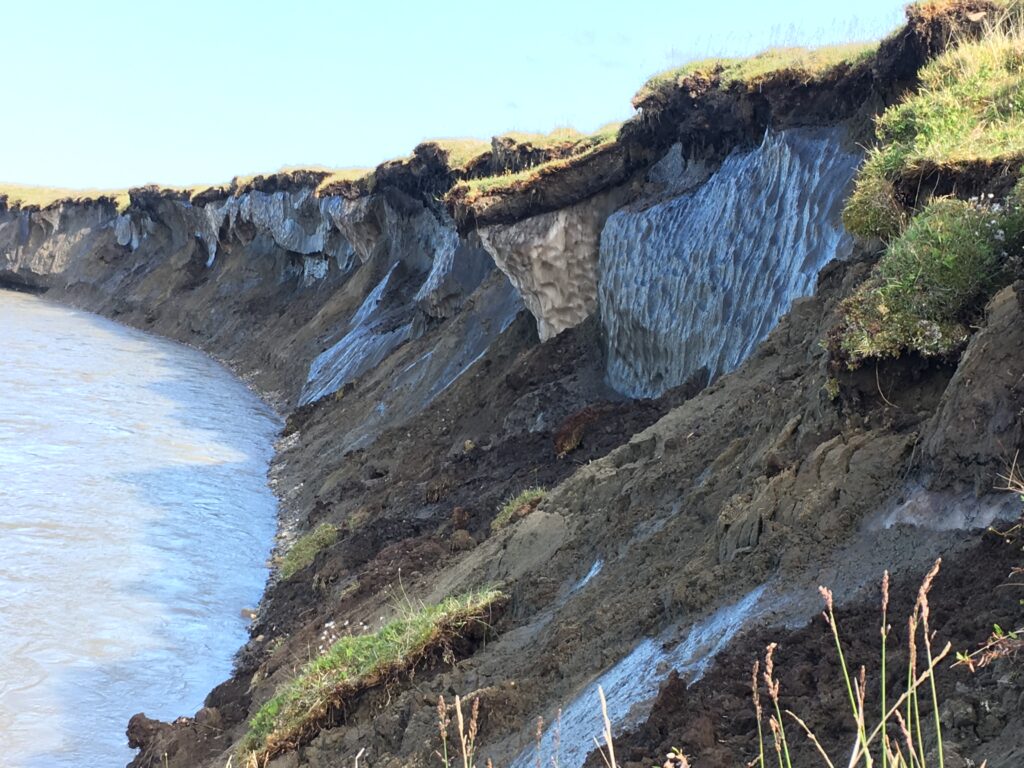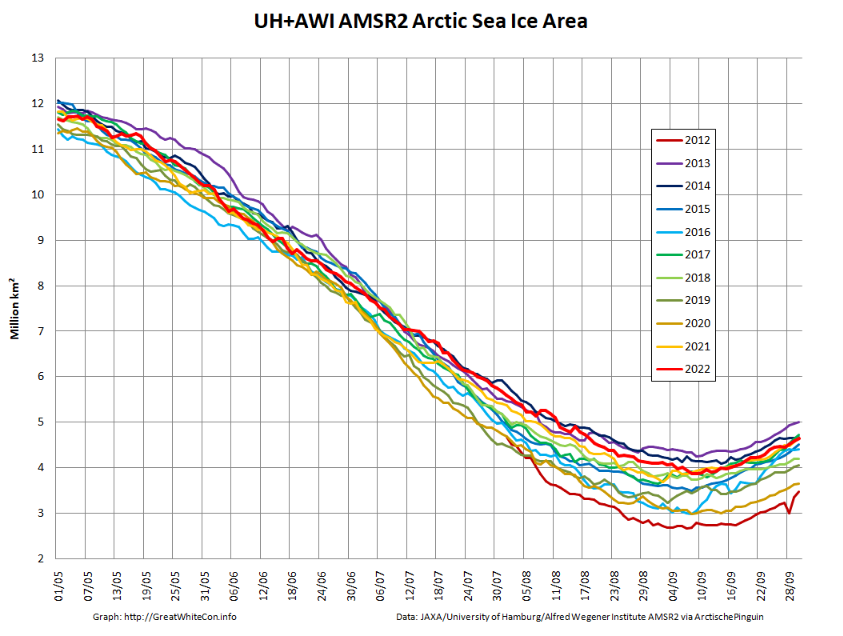UN Environment Programme adds permafrost melt and AI-controlled drones to a long list of environmental and social threats.
When a mysterious anthrax outbreak hit communities on the Yamal peninsula, Northwest Siberia, in 2016, scientists initially traced it back to the local reindeer population, which had been ravaged by the disease.
But deeper investigation found this strand of anthrax may have originated from ancient bacteria that had been trapped for millennia in the region’s permafrost, which were only now being released as a result of global warming.
Scientists at the UN Environment Programme (UNEP) have now warned in a new report that many more “reservoirs of ancient, mostly uncharacterised microorganisms and viruses” could be lurking under the tundra – which is warming at four times the global average.

Taken together with the well-known risk that trapped methane could be released as the region warms – adding dangerous amounts of the potent greenhouse gas into the atmosphere – the report cited permafrost thaw as “a critical issue with severe impacts for people and the environment”.
Welcome to the ‘polycrisis’
Ancient frozen pathogens were just one of the more eye-catching risks in a long list of threats detailed in the UNEP report, released this week and entitled ‘Navigating New Horizons: A Global Foresight Report on Planetary Health and Human Wellbeing’.
Some of the identified risks are, unsurprisingly, environmental. The rush for critical minerals to fuel the energy transition and the growth of artificial intelligence (AI), for example, will pose risks to nature and biodiversity and increase pollution, as mining companies plunder the land and oceans in search of these valuable metals.
But many of the factors on the list are not necessarily linked to sustainability – including the role of AI in warfare, for example, and a growing distrust of institutions. But combined with environmental crises, they create a complex web of dangerously destabilising forces, which the UNEP refers to as a ‘polycrisis’.
“The rapid rate of change, uncertainty and technological developments we’re seeing, against a backdrop of geopolitical turbulence, means any country can be thrown off course more easily and more often,” said UNEP Executive Director Inger Andersen at an event marking the report’s launch in New York on Monday.
“By monitoring signals of change and using the foresight approach outlined in this report – including looking outside the traditional environmental space – the world can avoid repeating mistakes of the past and focus on solutions that can withstand future disruption.”
Diseases and robots
Along with ancient Arctic pathogens, the risk of more conventional zoonotic diseases – that is, diseases that pass from animals to humans, of which coronaviruses are an example – is also rising as a result of land-use change, deforestation, habitat destruction, urbanisation, wildlife trafficking and unsustainable agricultural practices.
The resistance of bacteria, viruses, fungi and parasites to the effects of antimicrobial drugs is another risk that’s “approaching critical levels”, the UNEP warned.
AI also figured high on the list of threats – particularly for its use in warfare and synthetic biology, and the carbon emissions resulting from its intensive use of electricity. However, the report also stressed the technology could provide many solutions to the polycrisis.
The risks were grouped into what the UNEP designated as eight “critical shifts”: the changing relationship between humans and the environment; competition over critical resources; AI and technology; changing nature of conflict and warfare; mass forced displacement; persistent and widening inequalities; misinformation, declining trust and polarisation; and polycentricity and diffusion of governance.
The report ended with proposed solutions, including reforms to the global financial system that would lower sovereign borrowing costs, increase lending by development banks, developing more incentives to invest in the clean energy transition, and aligning the financial system with the Paris Agreement.
It also called for a new social contract that recognises the challenges of the polycrisis, giving young people a strong voice, and a new “framework for prosperity”.
Permafrost ‘freaks me out’
“Every time I read these reports I’m just petrified – the permafrost freaks me out,” Camila Zepeda, Mexico’s Chief Climate and Biodiversity Negotiator, said during the launch event.
She urged finance ministers around the world to read the report, saying they are the ones that could fund the solutions “in advance of all this frightening data”.
Zepeda also urged policymakers to forge “links with the private sector”. “We’ve got all the science mapped out,” she said. “Now we need to reach and make sure that the people who need to read this understand what we are looking at.”
Also speaking during the launch in New York, Olga Skaredina, representing UNEP’s Children and Youth Major Group, called on various stakeholders across government, business and NGOs to collaborate rather than work in silos.
“We are entering an era of polycrisis where each crisis is going to amplify the other,” she said, calling for “agile governance” and the “active participation of civil society” – including from young people.
Peter Gluckman, President of the International Science Council, deemed that the report provided a useful set of tools to step outside of short-termism and identify future opportunities and risks – “provided that it is done in a truly pluralistic manner, transcending narrow institutional mandates, sectors and other artificial divides that constrain our framing of the problems and solutions”, he said.





So, we’re worried about ancient microbes now? Just when I thought the Arctic was just about ice and polar bears! 🐻❄️
Who knew the Arctic could be such a drama queen? Ancient organisms making a comeback to shake things up! 😂
Great insights into the ancient Arctic organisms and their impact on our current environmental challenges. It might be beneficial to explore more about how these organisms could inform our strategies for mitigation. Looking forward to further discussions on this!
This article sheds light on an often-overlooked aspect of the polycrisis. Your analysis is spot on! It might strengthen the argument to include more case studies or examples of how these ancient organisms have influenced modern ecosystems.
Fascinating to see how ancient Arctic organisms can influence our understanding of contemporary global challenges! This highlights the importance of interdisciplinary research in addressing the polycrisis we face today. #CareerInScience
This research underscores the importance of preserving our planet’s history. For professionals in environmental science, it reinforces the need for a robust career focus on climate resilience and ecological conservation.
These resilient life forms are not just relics of the past; they hold vital clues to understanding climate change and its cascading effects. As we face interconnected challenges, it’s essential to recognize the importance of preserving these ecosystems. Join us in advocating for sustainable practices that protect our planet’s rich biodiversity! 🧊 #Polycrisis #ClimateAction #AncientOrganisms
Unlock the secrets of the ancient Arctic! Our cutting-edge research reveals how these organisms can help us tackle the global polycrisis. Join us in this groundbreaking journey—let’s turn challenges into opportunities together!
Discover the untapped potential of ancient Arctic organisms! These remarkable entities could be pivotal in overcoming the global polycrisis. Partner with us and lead the charge in innovative solutions that make a difference!